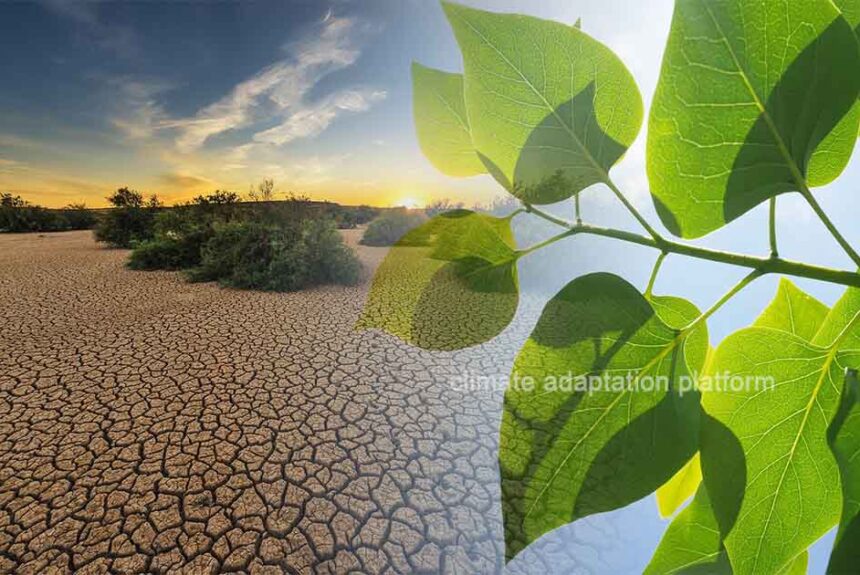The 2015 Paris agreement committed countries to keep the global temperature increase “well below 2°C”, while pursuing efforts to limit the rise to 1.5°C.
A study published in Nature Geoscience on November 11, 2024, by Dr. Andrew Jarvis of Lancaster University and Professor Piers Forster of the University of Leeds reveals that humans may have already caused a global warming of 1.49°C when compared to temperatures before the 1700s, before the Industrial Revolution.
Most measurements of global temperature use the mid-1800s or the pre-industrial period, which marks the beginning of large-scale carbon emissions, as a benchmark. However, the researchers from Leeds and Lancaster Universities employed a novel method that utilises CO2 records from air bubbles trapped in ice cores to assess global temperature changes back to a baseline from before 1700.
These records date back thousands of years, predating the Industrial Revolution and the onset of human activity-induced warming. According to the authors, when the global temperature is plotted against atmospheric CO2 concentrations, a linear relationship is observed, indicating that the points fall on a straight line. This reveals how much the Earth has warmed since pre-industrial times and how much of this warming can be attributed to human activities.
Currently, the IPCC attributes a human-induced contribution to global warming of 1.31°C, with an uncertainty range of 1.10 to 1.60°C, which does not provide a clear picture of whether the Paris Agreement has been exceeded.
“The climate is unimaginably complex, so perhaps it isn’t so surprising that such a direct method for accurately measuring the warming humans are responsible for has been overlooked,” Dr Jarvis added.
The scientists believe that their new method is a robust measure of global temperatures against the baseline set by the Paris Agreement.
Professor Forster, a co-author of the study, states that their findings indicate humans have already contributed to 1.5°C of warming. However, this does not imply that the Paris Agreement has been violated. It emphasises the urgency for countries to implement more decisive actions to curb the rate of warming and delay the point at which the Paris Agreement is breached.
So, when do we know that the Paris Agreement temperature limit of 1.5°C has been breached? The year 2024 marks the first year that the average global surface temperature exceeded 1.5°C above pre-industrial levels, and it is also the year that carbon dioxide reached record highs, not seen in 2 million years.
Professor Paul Dodds of the University College London (UCL) Bartlett School of Environment, Energy & Resources, writes that while the Paris agreement committed countries to keeping the global temperature increase “well below 2°C”, which is widely interpreted as an average of 1.5°C over 30 years. Therefore, he believes that the Paris Agreement has not yet failed, but recent high temperatures indicate how close the Earth is to crossing this critical threshold (Analysis: Temporary, 2025).
The WRI article provides an explainer on the famous 1.5°C temperature goal, the “north star” or guiding principle for the world’s climate action, and the basis for government policies and progress. It explains the origin of the agreement and the consequences that we will face when temperatures exceed 1.5°C. And whether we can still put the world on track to limit warming, and if so, how? The article discusses these questions and more.
But first, what does a 1.5°C temperature rise mean for the planet, and what does breaching it entail?
The IPCC reports that reaching this temperature threshold will expose close to 1 billion people to water stress and desertification. Climate adaptation and the resulting damages to agriculture are estimated to be $63 billion. Additionally, it will risk the extinction of about 14% of the world’s species, place 24% more people at risk of flood, cause a decline in coral reefs by up to 90%, and vector-borne diseases will become more widespread.
If this situation is bad enough, envision a future that breaches this temperature threshold. According to the article, these climate impacts are expected to worsen further. Relative to 1.5°C of warming, a 2°C of warming will double the current heatwave events in Southern Africa, increase wildfires in Mediterranean Europe by 1.6 times, and drive the cost of climate adaptation and damages to an additional $17 billion.
The article addresses frequently asked questions regarding the temperature limit of 1.5°C, including the rationale behind this number. It also presents and compares the risks the planet takes with each incremental temperature rise – from 1.5°C, 2°C to over 3°C.
It also discusses the regularly released reports that track global emissions and countries‘ climate action, such as the Emissions Gap Report, the Science-Based Targets Initiative, and the State of Climate Action. These reports often highlight the insufficient actions that countries take, which put the world on a trajectory of exceeding the limit.
Sources:
Jarvis, A., & Forster, P. M. (2024). Estimated human-induced warming from a linear temperature and atmospheric CO2 relationship. Nature Geoscience, 17(12), 1222-1224. https://doi.org/10.1038/s41561-024-01580-5
Humans have already caused 1.5°C of long-term global warming according to new estimates. (2024, November 11). Lancaster University. Retrieved from https://www.lancaster.ac.uk/news/humans-have-already-caused-15-c-of-long-term-global-warming-according-to-new-estimates
Analysis: Temporary warming above globally agreed temperature limit could have permanent consequence. (2025, May 20). UCL News. Retrieved from https://www.ucl.ac.uk/news/2025/may/analysis-temporary-warming-above-globally-agreed-temperature-limit-could-have-permanent#
Fransen, T. (2025, June 18). 1.5 Degrees C: Understanding World’s Critical Warming Threshold. WRI. Retrieved from https://www.wri.org/insights/1-5-degrees-c-target-explained?



Leave a Reply